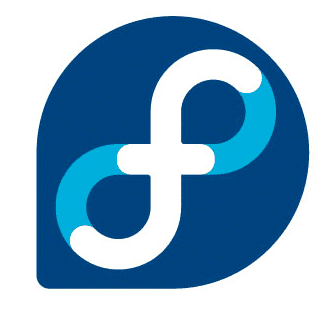What is an NFT?
An NFT (Non-Fungible Token) is a unique token that represents a digital asset. The token is a representation of something that can’t be replicated, or fungible. It is like a physical product that has a unique identity and value, but it can be traded and transferred like a cryptocurrency. An NFT is like a unique, scarce piece of art that can be traded for any other NFT on the blockchain.
You can think of an NFT as something like a CryptoKitty, which is an NFT that has become famous for its cute graphics and game-like features.
The first NFT was created in 2009 by CryptoKitties creator, Max Kordek. The first ever NFT was Kittie, an adorable cat that could be bought with the cryptocurrency ETH. The concept quickly caught on, and since then we have seen the birth of hundreds of new NFTs across different game platforms, including CryptoPunks, CryptoKitties, and CryptoZombies.
Should I Get Into Non-Fungible Tokens?
The NFT craze is far from being over. It’s no secret that celebrities, entrepreneurs, and businesses are using blockchain and cryptocurrency to revolutionize their industries, and the blockchain and crypto market is expanding at an unbelievable rate.
Blockchains are coming up with new ways to provide services for creating, exchanging, and trading digital collectible assets (NFTs). There’s a growing range of blockchain-based platforms that help you take part in the exciting world of NFTs.
The Hidden Cost Behind Creating NFTs
Some of the most popular platforms for creating and trading NFTs currently are OpenSea and Rarible. Ethereum-based marketplaces use a transaction fee called “gas” (named after the ethereum-based platform).
Gas is an amount of ether required to perform a certain function on the blockchain. In this instance, it would be adding a new NFT to the marketplace. The price of gas can vary depending on network congestion. Higher gas prices mean fewer transactions and lower gas prices mean more transactions.
How to Create an NFT
It’s surprisingly easy to create your own NFT. You can do that in 3 easy steps:
- create a digital wallet
- tokenize your art
- list it on a popular market
OpenSea and Rarible are the main platforms for the creation of NFT. While Rarible dominates in total sales, OpenSea offers more related services and includes the ability to create your own NFT web store powered by the OpenSea exchange. Both platforms allow users to upload their art and create collections without needing to have blockchain technical knowledge.
Before you start, you have to know that there will be some upfront costs. NFTs work with blockchain. They usually do it with Ethereum. Using blockchain has a cost, a network fee called gas, which you’ll have to pay to tokenize your art.
Rarible requires artists to mint their NFTs on the blockchain (on-chain)during creation. This means that the cost is lower if you operate recurrently. If you’re planning to sell a couple of NFTTs at huge prices, Rarible is probably your best bet. On the other hand, if you want to create a multitude of cheaper NFTs, you’ll want to use OpenSea’s Collection Manager.
OpenSea Collection Manager allows users to pay a one-time fee to set up a new collection. From that collection, an unlimited number of NFTs can be created and openSea’s centralized team stores them off-chain until a sale is made. At that point, the buyer will pay the gas rate associated with the transaction, and your NFT will be placed on the chain and transferred.
This tutorial will cover the step-by-step process and includes everything you need to know to create your own NFT in a collection in OpenSea.
Create a Digital Wallet
The first thing you’ll need to do to create your own NFT is set up a software wallet. This wallet can contain your NFT which you’ll also be using it for taking care of the blockchain fees.
Go to metamask.io where you can download the app or add the Chrome extension. Creating a MetaMask wallet is simple and free. Just remember to keep track of your passwords in case you ever need to recover the wallet.
How to Create a Digital Wallet
When you sell NFTs, you need to decide how you want to keep track of the transactions. You can use a single wallet to hold all of your NFTs, or you can create a separate wallet for each. This is a decision that you will need to make based on your needs.
The main advantage of using a single wallet is that you can quickly and easily transfer your NFTs from one platform to another. However, if you have a large collection of NFTs, you may want to set up several wallets so that you can better organize and manage your holdings.
Some platforms allow you to use a mobile app for your NFTs, but others require you to use their own mobile apps.
The easiest way to create a digital wallet for NFTs is to use a tool that creates wallets for you. If you’re a beginner, you’ll probably want to go with a tool that makes it easy to create an account and buy or sell NFTs from the same platform.
The best way to store your NFTs is in a digital wallet. While there are several digital wallets that are available for different operating systems, we recommend using the Ledger Nano S because it has the best security features and it’s compatible with all major operating systems. If you decide to use a different wallet, make sure it supports NFTs.
If you’re using a desktop wallet, it’s easy to get started. Just follow these three steps: Download the wallet of your choice. Create an account with your desired wallet provider. Import your private key into the wallet. This will allow you to securely store your NFTs on your computer.
You can then easily access them from any device you own. The Ledger Nano S is a small, USB-powered cryptocurrency wallet that provides security for all your cryptocurrencies.
Tokenize Your Art
Once you have a MetaMask wallet created, you can create your NFT. Go to opensea.io and click the Create button in the menu bar. Now you can connect your MetaMask wallet with OpenSea and get to work.
Create a name for your NFT collection, and then click the “add new item” button. Now you’re ready to upload the file you want to tokenize and give it certain properties to distinguish it from the rest of your collection.
Determine how many copies you want of each item and set a retail price.
List it on a Popular Market
To sell your first NFT, you’ll need to enable OpenSea to sell items from your account. This requires a blockchain transaction, so you’ll have to pay a gas fee. Send some Ether to your MetaMáscara, and you can get started. You will only have to pay this fee the first time you create an NFT collection.
If you don’t have Ethereum, you can use Coinbase or Gemini. If you’re completely new to cryptocurrencies, you can check out our guide to buying Ethereum. Once you’ve given OpenSea permission to sell your NFT, anyone can find and buy them on the OpenSea marketplace.
Conclusion
While it’s can be a lucrative way to boost your earnings, yes, it’s not unusual for people to make NFTs and then fail to sell them. To avoid losses, it’s best to make sure you create something that other people find valuable, then set a minimum selling price that will at least cover the associated fees.


